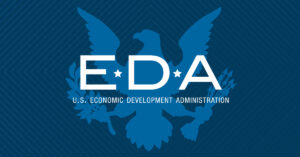Intense Spending in the 2024 Presidential Race
In the lead-up to the 2024 elections, significant financial resources are being channeled into digital advertising by candidates, parties, and various groups. A total exceeding $619 million has already been spent on the largest online platforms, Google and Meta, which collectively control nearly half of the U.S. digital ad market. However, the exact share of these expenditures in the political ad sector remains unclear due to a lack of comprehensive public data.
This figure likely underestimates the true scale of political spending on these platforms. Notably, costs related to ad creation and influencer endorsements are not disclosed by either platform. Our analysis includes only advertisers with spending of at least $5,000.
Definitions of “political” ads vary between Google and Meta, affecting the range of ads in their databases. Google’s criteria encompass ads about officials, candidates, parties, and voter-relevant topics, while Meta’s broader classification covers political figures and social issues.
Despite these limitations, our study offers valuable insights into digital political advertising trends in U.S. elections.
The predominant expenditure concerns the presidential election. Analysis of identifiable candidate-focused ad spending reveals that 64% ($248 million) is dedicated to presidential candidates. Senate races account for 19% ($73 million) of spending. An additional $232 million is directed towards multiple races and political issues without specific categorization.
Significant spending also targets Senate races in Arizona, California, Montana, and Texas, alongside a California measure on homelessness and Ohio’s 2023 abortion rights initiative. The table below lists the top 20 candidates and ballot measures by spending. In general, these expenditures are managed by the candidates’ campaign committees, but for some, particularly in presidential campaigns, other supportive groups contribute as well. Following Vice President Kamala Harris’s takeover of President Joe Biden’s campaign committees in late July, some Biden-supporting spending is attributed to Harris.
Within the platforms analyzed, Democratic entities and their supporters have outspent their Republican counterparts more than threefold in federal races. The chart below aggregates expenditure from candidates, parties, and groups favoring one party. The pro-Democratic spending disparity at the presidential level contrasts starkly with previous elections, where Donald Trump’s strategy involved substantial spending on platforms like Facebook. Some of this expenditure may have shifted to other channels.





